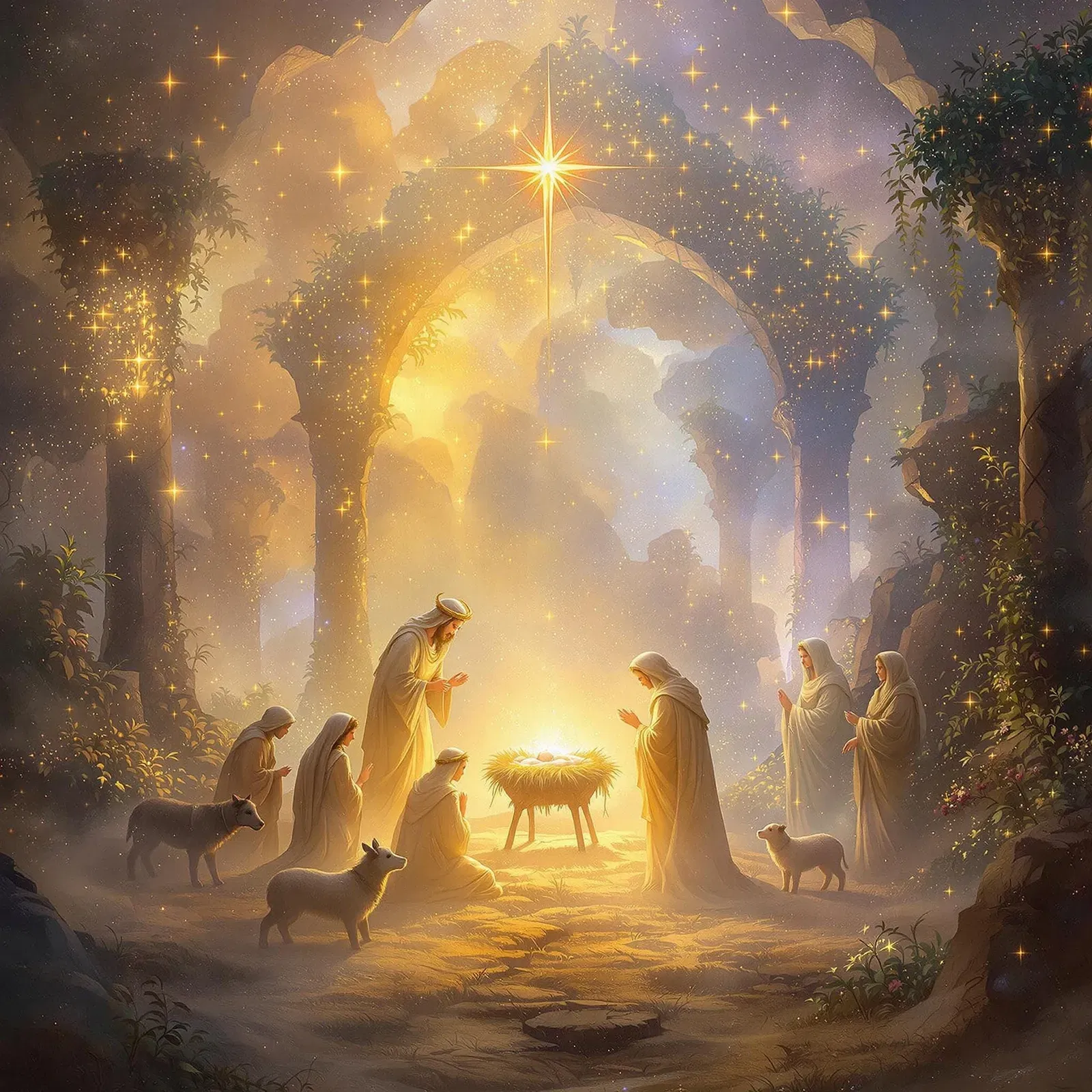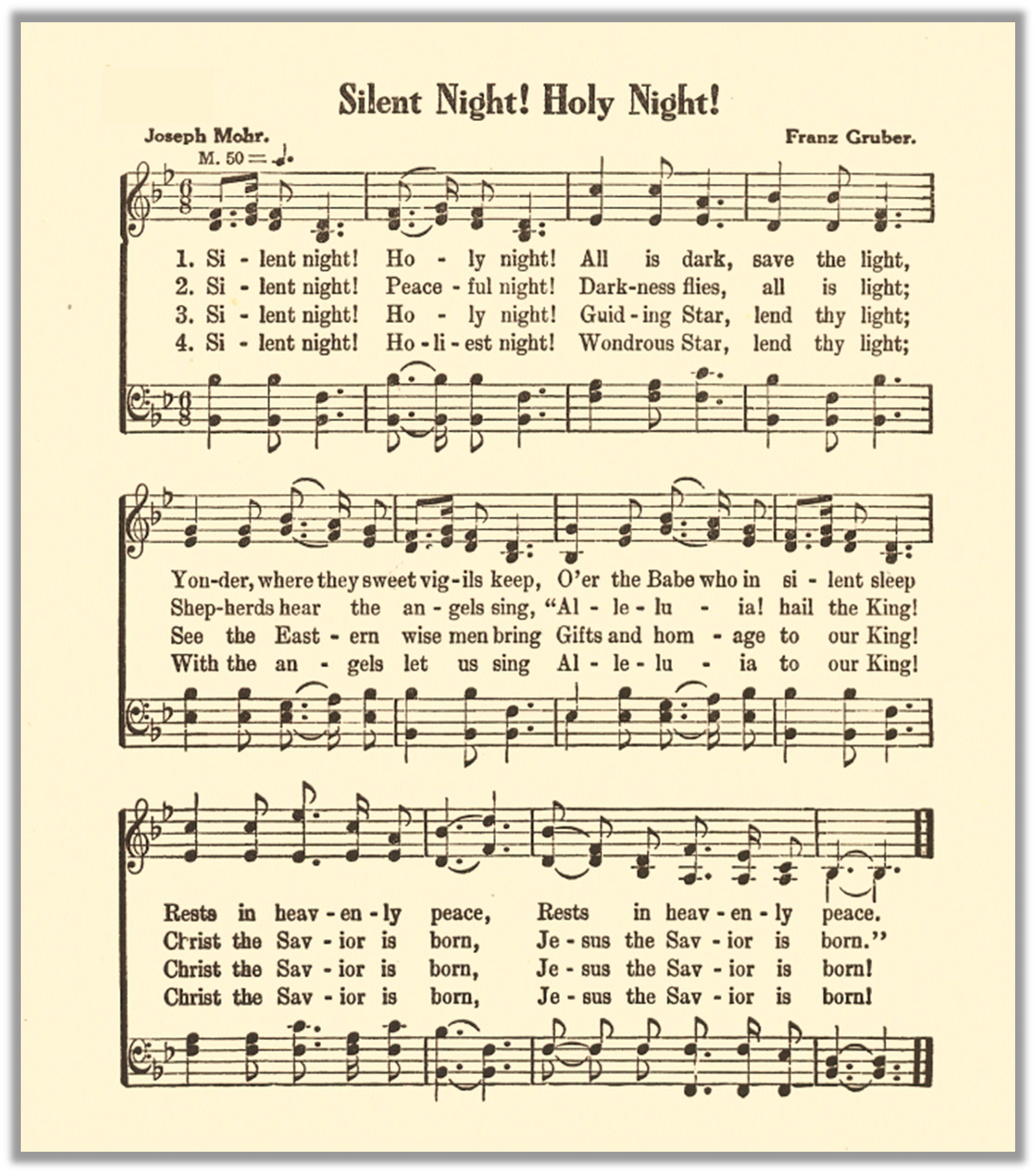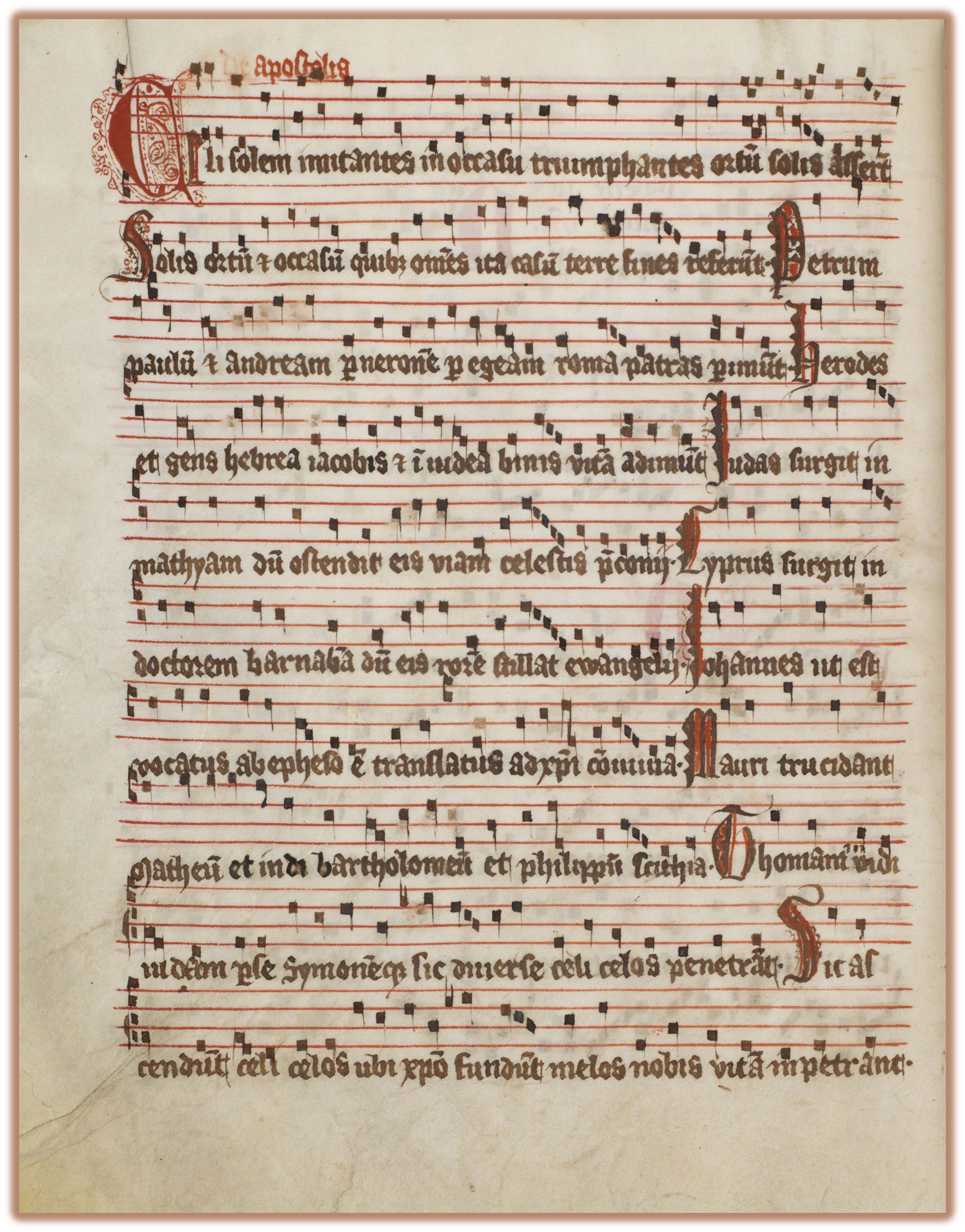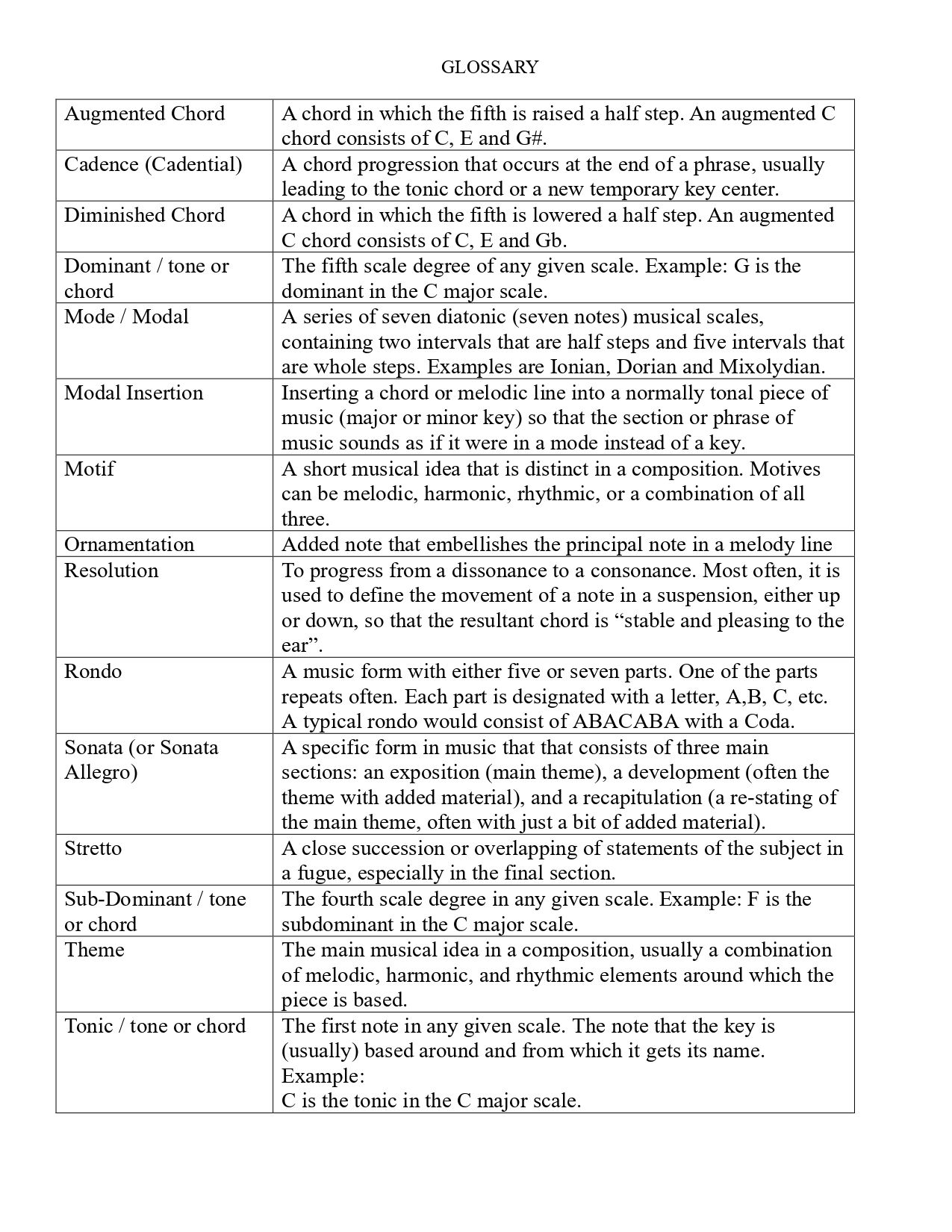Anatomy of a Composition – Silent Night – Song of Light For Piano Solo and Choral Group

The “Anatomy of a Composition” series of articles is for anyone interested in the composition process, or for Music Theory teachers and students. These articles will supply enough information to understand the basic elements of the song, while allowing for independent study of the particulars of each element. If you need more information, please Contact Us. We’re always glad to help people learn about composing and arranging.
This article contains some technical music theory terms. If you need help remembering a term or two, there is a glossary of terms at the end. There may be more definitions than you need.
Even though the title of this series is Anatomy of a Composition, this time we’re going to take a look at the development of my arrangements for Silent Night for Piano Solo and for the Choral version. As with so many composers and so many pieces of music, the development of a song is never a straight forward process.
Click HERE to go to the Salt Cellar web page with info about Silent Night – Song of Light – Piano Solo. You can also click HERE to explore the original version of Silent Night – Song of Light for SATB Choir. Each link will take you to where you’ll find links to the YouTube video, print sample and purchase option for each one.
History of my Affinity for Silent Night: I’ve loved the Christmas Carol Silent Night ever since I was a child. When I can, I love to play it on guitar in a sweet, folk-picking style as accompaniment to congregational singing at my church. I have done a number of simple arrangements, such as for flute and recorder, that have been played in a number of places. Then, I was inspired to arrange it for a choral group.
However, seeing as how there were a bazillion choral arrangements already, this one had to stand out quite a bit. Most arrangements of this Christmas carol have portrayed a more romanticized version of the birth of Jesus. I decided to let these arrangements reflect more of the uncertainty and adversity that both Mary and Joseph must have experienced. They start with some very open, unusual intervals that point up these uneasy feelings. As the arrangements progress, the music becomes more “friendly”, revealing the fact that God has had the whole situation under control from the beginning. The last verse is the most musically comforting.

Key Choice: The original key of the Christmas carol was in Bb. The Salt Cellar choral arrangement of Silent Night – Song of Light is in the key of C. I chose this key because it allowed for the widest achievable spread of notes, especially for the outer parts. The sopranos would sing a high G, while the bases would sing a low E in places, but most of their low notes would be a low G. Altos and tenors are not immune from a bit of a stretch at times, but the key of C made it much more doable for everyone. This key also fit the piano version quite well.
Time Signature Choice: The Christmas carol was written in 6/8 time, which indicates that it may have had a little more motion to it than the way it is sung and played today. Because of the more ponderous flavor of this arrangement, I chose to use a time signature of 3/4 because it lends itself best to the ethereal quality that I was going for.

Chord Structure: I didn’t follow a chord structure so much in these arrangements; the resulting chords, such as they are, are more of the result of an overlay of parts from linear melody/harmony writing. The chords include a large number of what might be called incomplete jazz chords and motion.
In the choral arrangement, which came first, the opening duet between the sopranos and the basses starts wide and grows wider. When the parts are fairly spread apart, the altos enter and connect the other two parts. Toward the end of the verse, the tenors add their color, not only by virtue of the voice color, but also the part that they add. The final cadence really isn’t a cadence at all; it end on a flat six (an A-flat), then the altos and tenors try to resolve the cadence by singing what could be a flat seven (B-flat), but the sopranos and basses hold their notes. It becomes an airy tone cluster instead of a cadence. The whole false cadence is a variation of a modal insertion, even though the modal progressions overlap.
The first verse of the piano solo arrangement is extremely similar, but even more airy than the choral version.
Form and Description: The form of both arrangements is simply three verses. The first is as I described it above. In the second verse, the tenors sing the melody, while, in the piano version, the melody is in the left hand. The chord structure is still not anywhere near the original, but it has a bit more “normalcy” about it.

Between the second and third verse is what could be called a false key change. It is actually an extension of the modal insertion that occurs at the end of the first verse. The chord progression here was very deliberate – IV(F) – V(G) – flat VI(A-flat) – Flat VII(B-flat) – I(C) at the beginning of verse three. It gives the auditory illusion that the key has changed, but, since the choral version contains wide ranges, it couldn’t really change key or else one or more parts would be out of range. The third verse contains a large amount of quasi-stretto in it. The musical device was first used in fugues, but here I have used the technique to give the piece some extra texture and interest. Most of the time, the phrase, including lyrics, are repeated after the melody states them. However, in a number of places, the lyrics and harmony begin just before the melody. This is most evident in the choral version and adds a wonderful sense of anticipation to the piece.
Secret(s) in the arrangement: In many of the Salt Cellar compositions and arrangements, there are hidden melodies or chord progressions, sometimes a meaningful word or phrase. Not so in this arrangement. The biggest hidden elements are the quais-jazz chords that were used. These same kinds of chords are also found in pieces by Bach, Handel, Mozart and a plethora of others. In the book of Ecclesiastes in the Bible, King Solomon declares that there is nothing new under the sun; so it is in music. Many jazz chords, and their surreptitious use, are hundreds of years old.
Salt Cellar Creations has a growing library of original works and arrangements that not only sound great when you ensemble plays them, but are equally suited to music theory analysis. Find out more about the available music Salt Cellar Creations HERE.
SCC can also compose an original piece for you or do a custom arrangement for you. There are two ways that this can be done; one is much more affordable than the other. And SCC is always looking for ideas of pieces to arrange or suggestions for original pieces.
We have sold music not only in the US but in Canada, the United Kingdom, France, Australia, New Zealand and Austria. Please visit the WEBSITE or CONTACT US to let us know what we can do for you!
